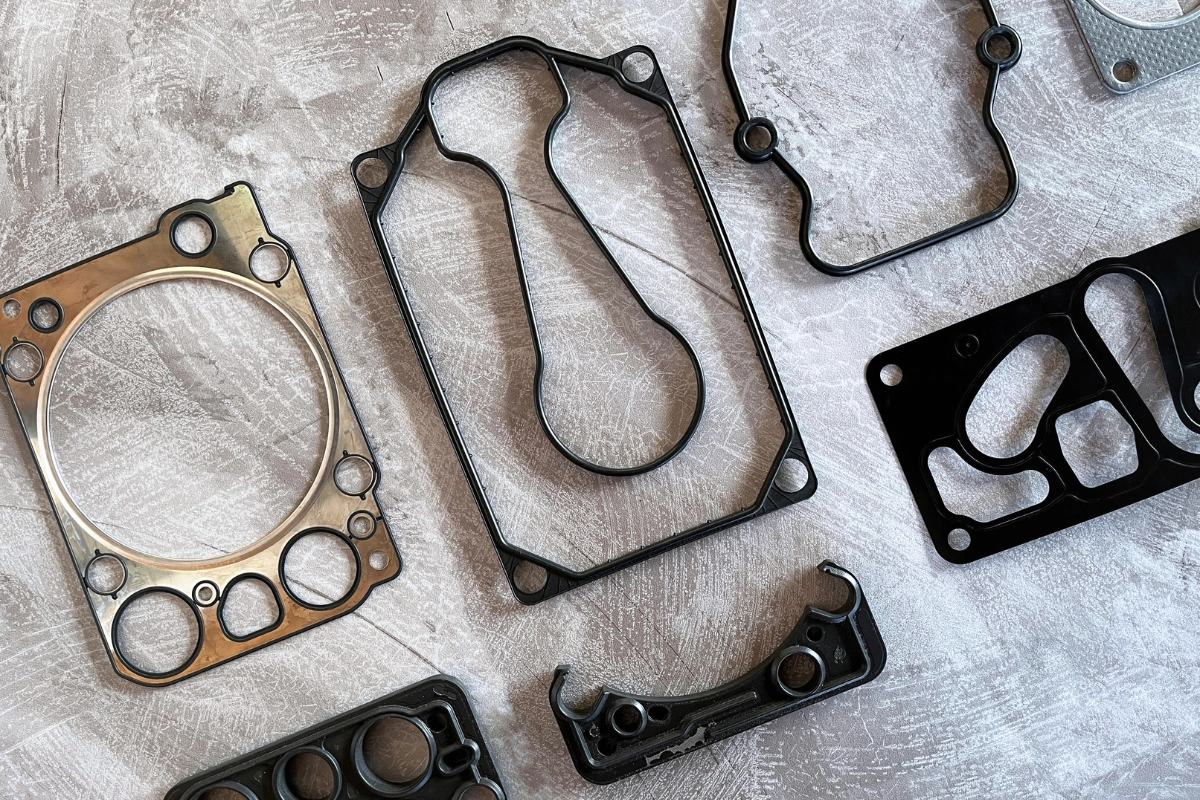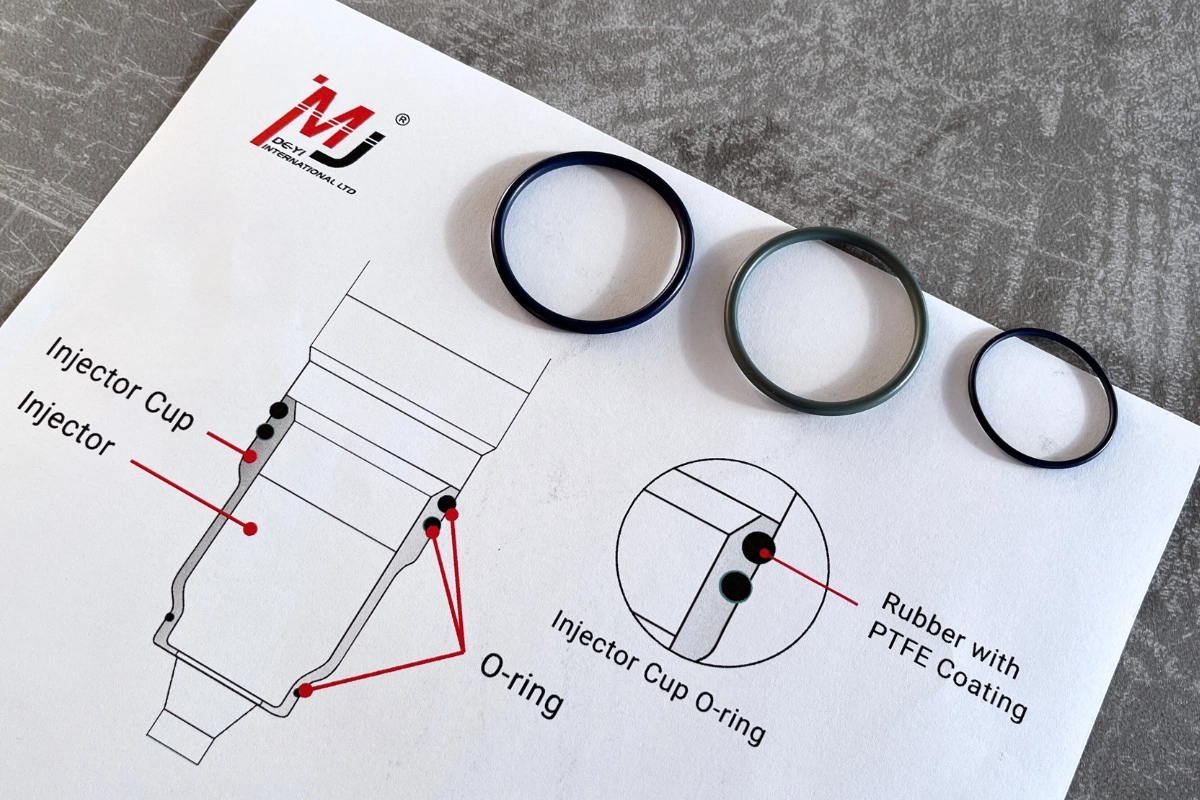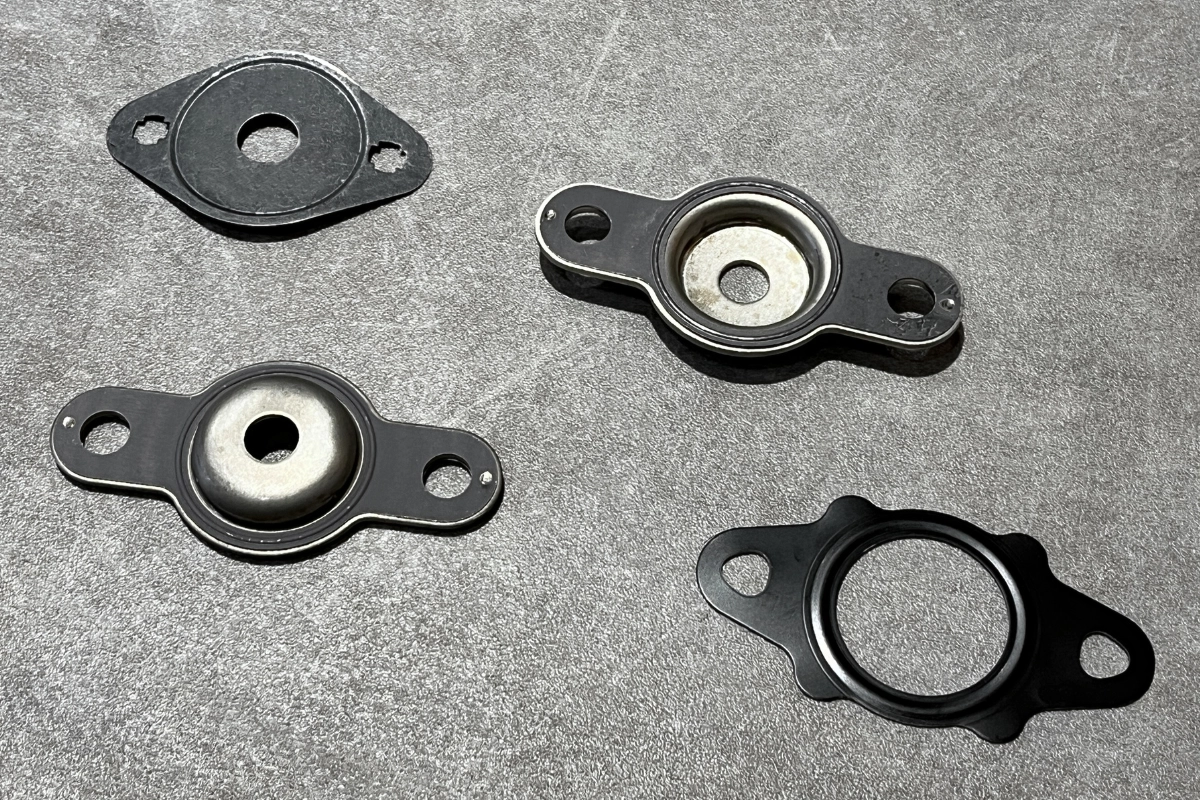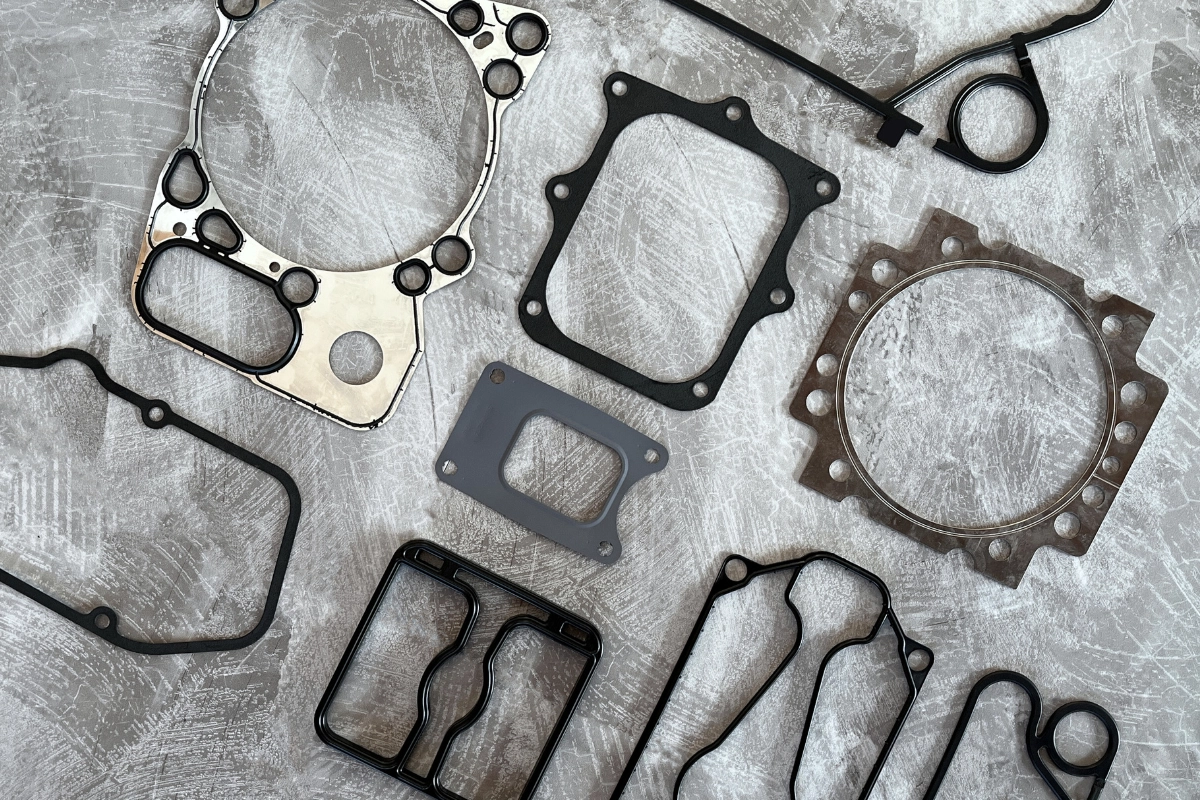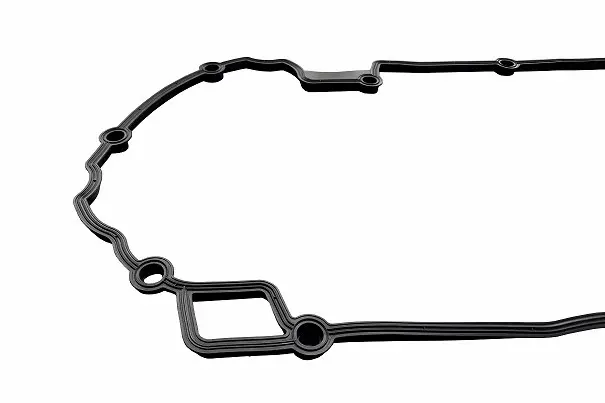
Table of Contents
What is Valve Cover Gasket?
The valve cover gasket is used as a seal between the valve cover and the cylinder head. Over time, especially under high-temperature conditions, the valve cover gasket can deteriorate and start to fail. When this happens, engine oil may leak from the sides of the cylinder head.
Common signs of a faulty valve cover gasket include a burning oil smell, low engine oil level, or an oil-stained and dirty valve cover. Once these symptoms appear, it’s time to replace the gasket to prevent further engine issues.
This article introduces the common rubber types used for valve cover gasket materials, helping you better understand how material impacts sealing reliability and heat resistance.
What are the most common valve cover gasket materials?
The most common valve cover gasket materials are designed to withstand high temperatures, constant exposure to engine oil, and long operating hours. Each material has unique properties that make it more or less suitable depending on the vehicle type and operating conditions. Below is a comparison of the five most widely used options:
1. FKM (Fluoroelastomer)
Pros: Exceptional heat resistance (up to ~250°C / 482°F) and superior chemical stability against synthetic oils, biofuels, and aggressive additives.
Cons: Higher cost compared to other rubbers.
FKM is often considered the best material for valve cover seals in demanding environments.
2. AEM
Pros: Good balance of heat resistance and flexibility, tolerates continuous exposure to engine oil.
Cons: Poor resistance to polar solvents
3. EPDM
Pros: Excellent resistance to heat, weathering, ozone, and coolants. Performs well in environments with high heat cycling.
Cons: Limited resistance to petroleum-based oils and fuels.
4. ACM
Pros: Solid resistance to hot oil and oxidation, with good flexibility.
Cons: Inferior low-temperature elasticity and mechanical performance compared to AEM.
5. Rubber with Metal Core
Pros: Combines rubber’s sealing flexibility with a metal carrier to ensure structural strength and dimensional stability. Reduces the risk of gasket displacement under high torque.
Cons: Slightly more complex manufacturing process.
Comparative Insights
FKM – Premium option with superior heat and chemical resistance, making it ideal for demanding valve cover gasket applications.
AEM – Balanced performance and cost efficiency, suitable for standard valve cover gaskets requiring consistent oil resistance.
ACM – Good oil and oxidation resistance at a reasonable cost, commonly used in everyday passenger vehicles.
EPDM – Excellent resistance to heat cycling, ozone, and coolants; often combined with other rubbers due to limited oil resistance.
Rubber with Metal Core – Provides strong structural stability and sealing reliability, best for heavy-duty engines under high mechanical stress.
Valve Cover Gasket Material Overview
Now that we understand how different rubber materials relate to valve cover gaskets, in this paragraph we are going to focus on the cross-sectional profile of valve cover gaskets and how it is connected to sealing performance. Below, I will describe the diamond PIP seal (PIP seal), H PIP seal, steel edge rubber bonded, and rubber with encapsulated steel core. These rubber-related structures are more easily identified when view the cross-section of valve cover gaskets.
1. Diamond PIP Seal

Since the bumps on the rubber gasket must fit perfectly into the valve cover groove, the size and dimension of each bump are critical when producing a diamond seal type valve cover gasket.
2. H PIP Seal
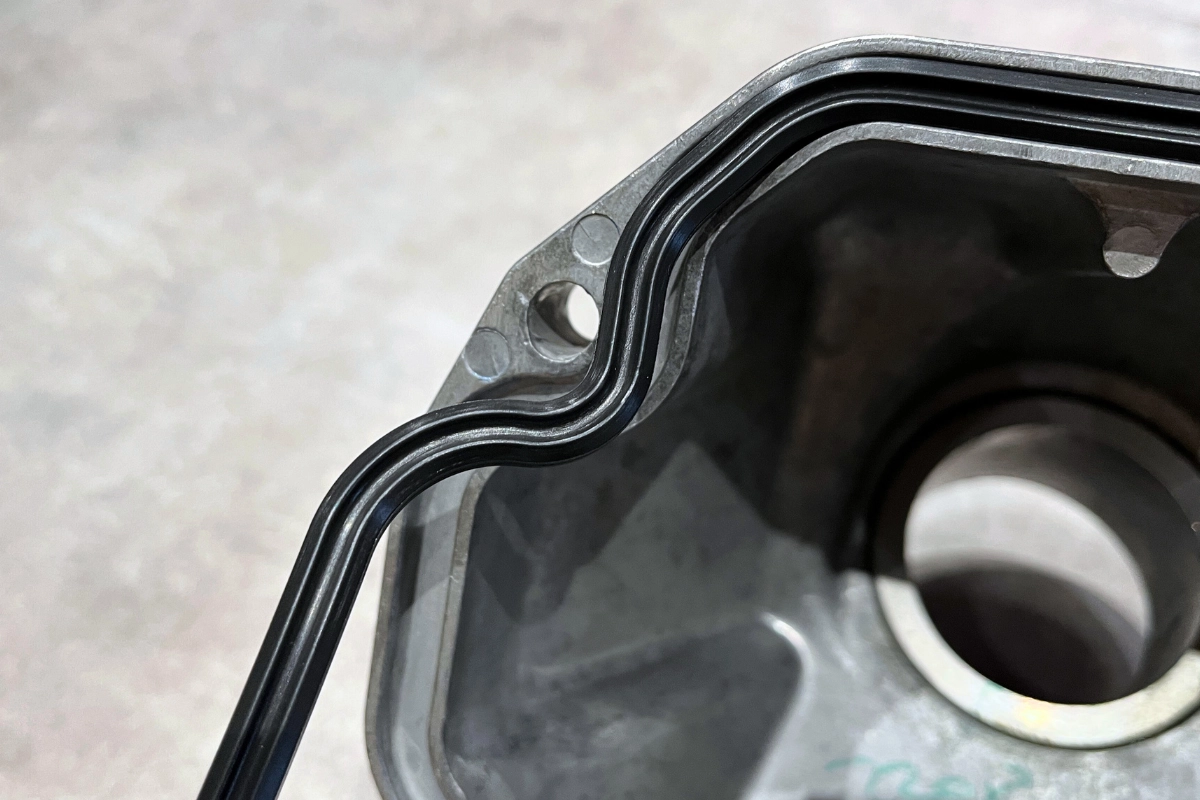
3. Steel Edge Rubber Bonded
The steel edge rubber bonded type gasket combines a rubber sealing layer with a visible steel edge. In cross-section, you will see the rubber securely bonded to the metal, with the steel edge acting as a rigid reinforcement. This structure enhances the gasket’s overall strength and ensures stability when compressed between components. The steel edge helps the gasket resist deformation under tightening force, while the rubber provides the necessary elastic sealing.
4. Rubber with Encapsulated Steel Core
The rubber with encapsulated steel core type features a steel insert completely covered by rubber. Unlike the steel edge bonded type, the core is not exposed but fully surrounded by elastomer. This construction combines the rigidity of steel with the flexibility of rubber, resulting in a valve cover gasket that maintains uniform compression and excellent sealing even under pressure.
Quick FAQ about Valve Cover Gasket Material
What is the best valve cover gasket material?
FKM (Fluoroelastomer) is widely regarded as the best valve cover gasket material due to its exceptional thermal stability (up to 250°C / 482°F) and outstanding chemical resistance to synthetic oils, fuels, and aggressive additives.
AEM vs ACM rubber in valve cover gasket material
AEM offers better low-temperature flexibility and overall durability; ACM provides solid oil resistance at a lower cost but is less flexible in cold conditions.
How do I customize a valve cover gasket?
Please provide a drawing or sample and specify the changes you need, such as material or thickness. Our team will evaluate your request and offer a gasket solution that meets your requirements.
Read More about Valve Cover Gasket
Valve Cover Gasket:The Essential Key for Engine
Volvo D13 Valve Cover Gasket 22777560
MTU 2000 Series Engine Valve Cover Gasket
Duramax LB7 Valve Cover Gasket (01-04) and Kit Solution
MJ Valve Cover Gasket Installation Video

